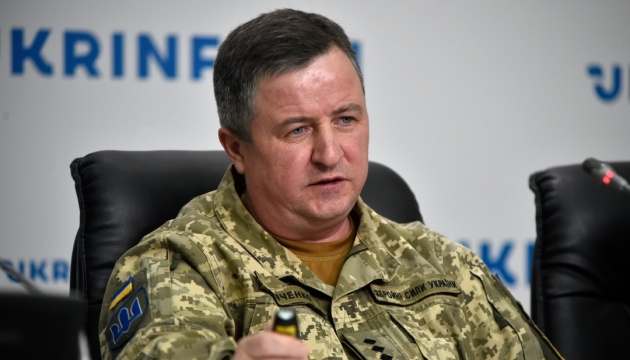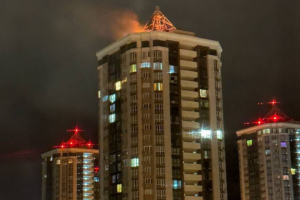
Ukraine’s Ground Forces Command outlines four stages of basic training for mobilized personnel
Yurii Diachenko, Chief of the Training Centers Preparation Department of the Ground Forces Command stated this during a press conference at Ukrinform on the topic ‘Basic Military Training”.
"The structure of the course includes four main stages of training. In the first stage, safety protocols for handling weapons are taught along with legal foundations of military service and responsibilities of servicemen. The individual training course includes study of core subjects, development of skills in related areas as well as study of military history and fostering a commitment to defending Ukraine’s territorial integrity," said Diachenko.
According to him, in the third stage, the recruit undergoes a course on actions within a unit. This involves refinement of practical skills, endurance building, and evaluation of abilities to withstand physical and psychological stress in near-combat field conditions.
After this, in the fourth stage, a comprehensive tactical task known as a "field exercise" is conducted over three days to assess combat readiness and independent action under battlefield conditions without instructor intervention.
Diachenko also noted that daily training has been reduced from 10 to 8 hours, with two hours allotted for independent study. Besides, new components have been included in the training course, such as specialized training (counter-drone measures and use of Kropyva software), training on various machine gun models and firing tactics.
"I would also like to emphasize the increase in the practical component of firearm training. According to the updated program, 10 professional shooting drills have been introduced additionally. Previously, there were 29, and now there are 39. The number of ammunition for the assault rifle has also increased – from 551 rounds to 866 rounds," informed Diachenko.
According to him, significant attention is given to pre-medical training. The duration of the course is 16 hours, with four hours of theory and 12 hours of practical exercises. During training, recruits learn to use tourniquets and bandages, restore breathing, quickly respond to injuries in combat conditions, and acquire skills in evacuation and transportation of casualties.
Each servicemember is provided with an individual first-aid kit, containing a full set of medical supplies for training exercises. The use of these supplies allows them to practice skills as closely as possible to combat conditions, emphasized the representative of the Ground Forces Command.
As the event participants shared, practical exercises are conducted in the format of scenario-based training that simulates real combat situations. The focus is placed on the speed and accuracy of providing assistance under stress.
During the course of training, significant attention is given to psychological preparation, which includes overcoming obstacle courses, fear of heavy armored vehicles, strengthening mental resilience under constant fire and UAV strikes, and creating the most challenging environment possible to develop servicemembers' ability to control their psychological reactions. Additionally, soldiers are trained to provide psychological assistance and self-help.
Diachenko also emphasized that the adaptation and follow-up training of servicemembers takes place in military units so that they could integrate into tactical groups and enhance combat resilience.
As previously reported, the Commander of the Ukrainian Ground Forces, Lieutenant General Oleksandr Pavliuk, stated in an interview with Ukrinform that training centers for mobilized personnel have incorporated more practical training and new programs, taking into account changes in the tactics of the Russian army on the battlefield.




